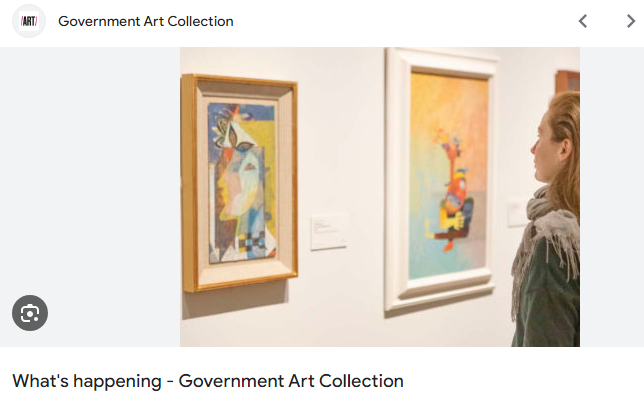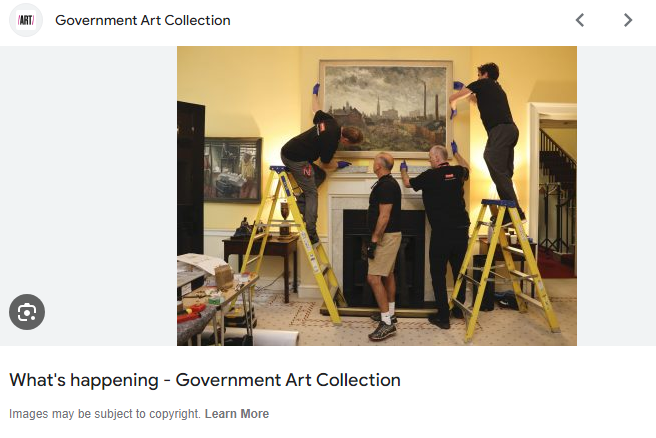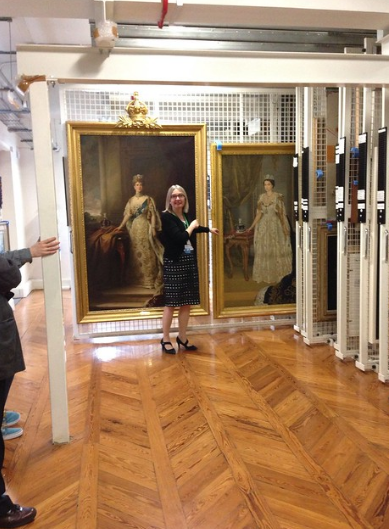The UK Government Art Collection: A Reflection of Prestige, Power, and Politics

Art has long been a mirror reflecting the cultural and political currents of society.
By Pamela Jackson

Image Credit: flickr.com
Art has long been a mirror reflecting the cultural and political currents of society. In the UK, the Government Art Collection (GAC) serves as a significant embodiment of this interplay, housing a vast array of works that bridge the realms of prestige, power, and politics. This esteemed collection significantly shapes and informs the national identity while providing a powerful commentary on the evolving landscape of British governance and society.
A Historical OverviewEstablished in 1898, the GAC was designed not only as a repository for works of art but as a means to promote the best of British artistic talent and provide a cultural backdrop to the country's political institution. The collection encompasses over 14,000 works, featuring pieces from both contemporary and historical artists, with notable names such as David Hockney, Henry Moore, and Bridget Riley. Displayed in various government buildings—including the Houses of Parliament, embassies, and government offices—the collection offers more than aesthetic pleasure; it serves as a dialogic tool through which the UK communicates its values, identity, and aspirations.
Art as an Instrument of InfluenceArt has a unique ability to transcend the spoken word, and in the context of the GAC, it acts as a conduit for political expression and national pride. The pieces selected for display are not merely decorative; they resonate with the values and vision of the government at any given time. For instance, during moments of national crisis, artworks that inspire resilience and unity may be emphasized, while pieces that reflect diversity and inclusivity might be highlighted in more progressive governmental epochs.

Moreover, the collection plays a vital role on the international stage. When ambassadors host foreign dignitaries or diplomats, the art displayed serves to communicate a narrative of British history, culture, and progress. A carefully curated exhibition of art can convey messages about Britain’s values, its commitment to the arts, and its position on the world stage. Thus, the GAC becomes an instrument of soft power, showcasing a nation that prides itself on cultural achievements and artistic innovation.

Reflecting the Changing Political LandscapeAs British society evolves, so does the GAC's collection. The acquisition and display of diverse artists—both geographically and thematically—mark a shift towards inclusivity reflective of modern British society. Recent initiatives have included increasing representation of women artists and artists of color, ensuring that the collection speaks to the complexities of identity in the UK today.
For example, the inclusion of contemporary works that discuss social issues, such as climate change or systemic inequality, highlights how the government recognizes and responds to pressing societal concerns. Art becomes a vehicle for advocacy and awareness, illustrating that the past does not exist in isolation but is deeply connected to ongoing political discourse.

Image Credit: flickr.com
Cultural Education and EngagementBeyond its political implications, the UK Government Art Collection serves an educational purpose. By providing public access to these artistic treasures—whether through exhibitions, virtual tours, or educational programs—the GAC fosters a deeper appreciation of art and culture among the populace. It encourages dialogue between citizens and their government, allowing the public to engage with the artworks and consider their significance.
Artworks can evoke emotional responses and provoke critical thinking, pushing viewers to reflect on their own beliefs and the societal issues at hand. In this sense, the GAC serves as a dynamic space for cultural education, where art stimulates discussion about the nature of democracy, governance, and societal values.
ConclusionIn conclusion, the UK Government Art Collection stands as a crucial component in the intricate tapestry of national identity, power dynamics, and cultural expression. Through its diverse and representative collection, it shapes and reflects the country's political landscape, acting as both a historical document and a living narrative of Britain's ongoing story. The GAC is more than just a collection of artworks; it is a vital instrument in the discourse around prestige, power, and politics—a testament to how art can engage, reflect, and influence the very fabric of society. As the political landscape continues to shift, one can expect the Government Art Collection to evolve, remaining a potent symbol of the nation’s cultural and political identity for generations to come.